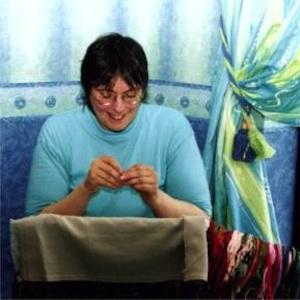- Home
- Free Assisi Pattern
Your First Assisi Rose: A Free Pattern & Fun Step-by-Step Guide
Have you ever admired those beautifully intricate embroideries where the design seems to magically appear because the background is all filled in?
That’s the wonderful reverse magic of Assisi work, and guess what? You can absolutely do it.
This lovely rose pattern is the perfect first taste. It’s a small project that delivers a big "wow," and I'll walk you through every single step.
Ready to create something you’ll be proud of? Let's get started!
Say Hello to Your Beautiful Assisi Rose
Isn't it a beauty? This simple, elegant design is all yours. Below is the finished piece to get you inspired.
Now it's your turn to experience the timeless allure of this remarkable embroidery, irrespective of your sewing skills.
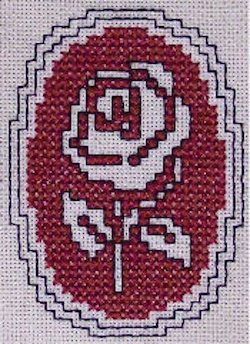
What You'll Need to Gather
You don't need much to get going, just a few simple supplies:
- An 8-inch (20cm) square of 14-count Aida or 28-count evenweave fabric
- Embroidery floss (I used classic red, DMC 498, and black, DMC 310)
- A tapestry needle (size 24 or 26 will be perfect)
- An embroidery hoop to keep everything taut
Let's Get Stitching!

Here comes the fun part. We'll break it down into easy little steps so you can relax and enjoy the process.
Finding Your Starting Point
To make sure your rose ends up right in the middle, it's always best to begin stitching from the center of the fabric.
(A little pro-tip: you can find the center by gently folding your fabric in half, and then in half again!).
Because the background shape is symetrical, there is actually a stitch in the centre horizontlly, not a fabric thread. Moving your centre slightly to one side or the other is not going to make a difference to the overall result, so don't let this throw you.
Step 1: Drawing the Lines with Backstitch
First things first, let's stitch the outline of our rose. Think of it like a coloring book—we're just creating the lines before we fill in the background! Using 1 or 2 strands of your black thread (DMC 310), depending on how obvious you want the lines to appear, outline the entire rose design using backstitch.
Step 2: Filling the Background with Long Armed Cross Stitch
Now for the magic we talked about! The solid covering of Long Armed Cross Stitch is what creates that beautiful reverse effect, making your un-stitched rose really stand out.
Don't let the name intimidate you; it's just a slightly stretched-out version of a regular cross stitch.
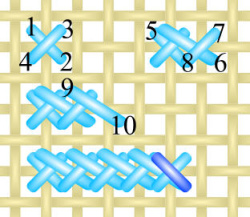
- Start with a basic cross stitch. Following the diagram above, bring your needle up at 1, down at 2, up at 3, and down at 4. That’s your first little anchor stitch.
- Now, for the "long" stitch. Bring your needle up at 5 and take it down at 6 to create the first long arm.
- Keep the rhythm going. You'll repeat the sequence of stitches from 7 to 8, and then 9 to 10.
- A quick tip for neatness: Try to make sure the shorter "arm" of your stitches always crosses over in the same direction. It's a small detail that makes the finished piece look wonderfully polished.
- Finish the row. When you get to the edge of the design, finish the row with a normal cross stitch (marked in a darker blue on the diagram).
Work this stitch in rows to fill the entire background, and watch your beautiful rose emerge.
Fancy a Bit of History For Your Tea Break?
While you're taking a breather, here’s a fun little story.
This style of embroidery is named after Assisi, the charming Italian village where it originated centuries ago!
It has a deep connection to St. Francis, and the craft was revived in the 19th century by local women. Traditionally it was done in red or blue, but later stitchers started playing with greens and golds, too.
The classic red floss you're using for this project is a perfect example of that timeless tradition! So, as you stitch, you're taking part in a long, lovely history of creativity!
 A bronze statue of St Francis in the main Basilica of Assisi. He is depicted as a soldier, realizing his destiny lay in more peaceful ways. - Photo by Cath Andrews
A bronze statue of St Francis in the main Basilica of Assisi. He is depicted as a soldier, realizing his destiny lay in more peaceful ways. - Photo by Cath AndrewsLook What You Did! What's Next?
Congratulations on completing your first Assisi rose!
You've mastered the 'reverse magic' we talked about. You've created something to be truly proud of.
If you’ve caught the bug and are itching to try more, these books are fantastic resources for exploring the technique further.
For a classic guide: Assisi Embroideries by Therese de Dillmont. You can sometimes find vintage copies online.
For a rare gem: Assisi Work & Italian Hemstitching by Camela Testa.
For modern inspiration: Assisi Embroidery: Technique and 42 Charted Designs from the Dover Needlework Series. This one is often available secondhand
Thank you for stitching along with me.
A special thank you to my friend Cath Andrews for allowing me to share her beautiful photographs of the village of Assisi, below.
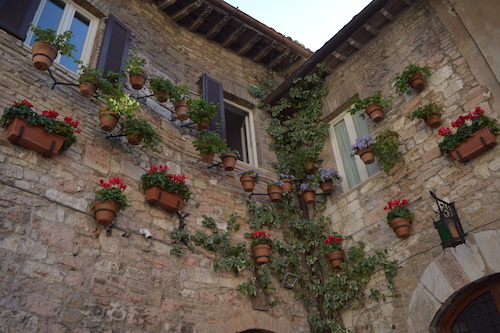
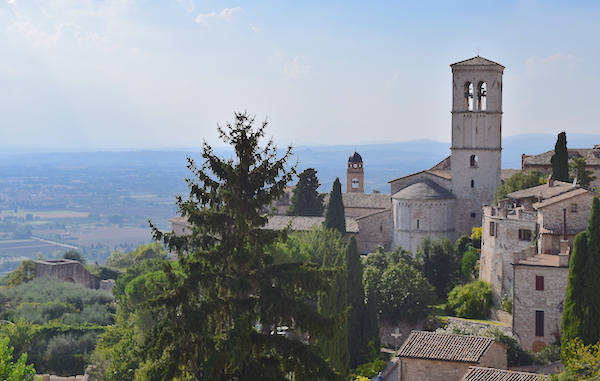
Stay connected between projects
If you’d like occasional updates from my embroidery room, including new patterns, gentle tips, and little things I think you might enjoy, you’re warmly invited to join the Stitchin’ Times newsletter.
No pressure. Just a friendly note now and then to keep you inspired.



